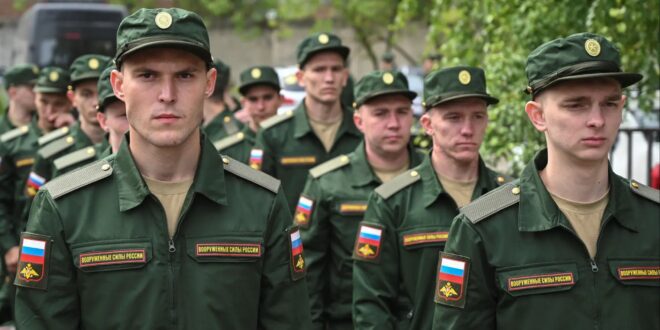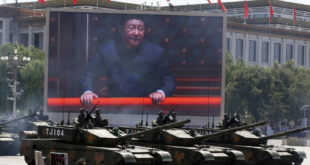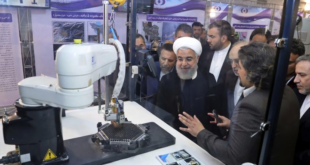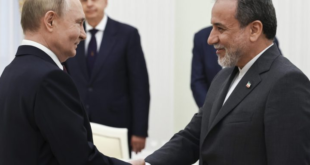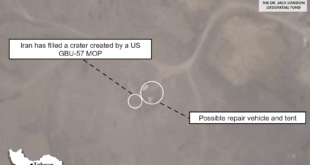As the fighting in Ukraine grinds on, Western policymakers and military officials are thinking ahead to the next war. Given how fast Russia is reconstituting its military, they are asking, when might it be able militarily to launch another large-scale offensive operation?
German Chief of Defense Carsten Breuer told reporters in April that a Russian attack on NATO soil could be possible within five to eight years. Norwegian Chief of Defense Eirik Kristoffersen offered a more alarming assessment this month, suggesting that NATO had only two or three years to prepare for a Russian attack on the alliance. Recent statements by U.S. officials see little slack at all in Russia’s buildup. Talking about the state of the Ukraine war in April, Chairman of the Joint Chiefs of Staff General Charles Brown, Jr. told reporters that Russia had “aggressively reconstituted its military force.”
Understanding the speed of reconstitution is vitally important. But the speed doesn’t tell the whole story. The nature of Russia’s military reconstitution matters, too.
Understanding the speed of reconstitution is vitally important. It informs prioritization of Ukrainian and Western military investments and lends urgency to planning efforts. But the speed doesn’t tell the whole story. The nature of Russia’s military reconstitution matters, too. Understanding both will be critical in ensuring that the alliance is not only ready in time, but also ready to contend with the right threat.
Russia’s Race to Reboot
A combination of factors has allowed Russia to replenish its supplies of equipment and personnel after suffering tremendous losses in Ukraine during the last two years. Moscow has increased defense spending and mobilized the country’s defense industrial base. It has ordered the mobilization of military reservists, recruited prisoners, employed more contract soldiers, and recruited some foreigners to fight in the conflict. Russia has also turned to China, Iran, and Belarus for materiel support.
In the coming years, Russia’s military and political leaders will make further decisions about the structure and characteristics of its armed forces, as well as the relationship between its citizens, military, and defense establishment. These decisions will be informed, in part, by its experience waging war against Ukraine. The types of forces and capabilities that Russia has lost, and the performance of different components of its armed forces in the conflict, will be top of mind. So too will Russian perceptions of the threat environment.
Other factors will hold sway, too, including the legacy of historical defense reforms. This history—from unrealized plans for reform in the final years of the Soviet Union to the failures of the so-called New Look reforms after Russia’s 2008 invasion of Georgia—suggests that attempts to create a leaner, qualitatively superior force have not succeeded in the past. Resource constraints, corruption, and a lack of trust and conflicting interests among different military constituencies may similarly impede major reforms today.
Another important factor will be the trajectories of Russia’s relationships with key foreign partners. These could either enable Russia’s military reconstitution (if Iran, North Korea, and Belarus continue to provide military equipment, munitions, and convenient staging grounds) or hinder it (if new or existing points of friction disrupt the flow of materiel to Russia).
At the moment, Russia is building a larger military and structuring it to fight large land wars. But Moscow could pivot. In the last two years, Russian military scholarship has begun to hint at some of these alternatives. Some argue that Russia should rely less on mass and ground forces, prioritize investments in advanced military technologies rather than relying on legacy systems, or move toward a less centralized organizational structure and adopt a mission command approach. The advocates of these ideas are still in the minority, however. And a variety of economic, political, and cultural factors would make it difficult for Russia to implement such changes.
The reconstituted Russian military could take many future forms, each with its own vulnerabilities and strengths. Each would require a different military response from NATO.
Earlier this month, Admiral Rob Bauer, the chair of the NATO Military Committee, emphasized in a speech at the U.S. Army War College that the alliance needs to be prepared to do more than “deter and defend against” the Russian military of today. Rather, the alliance “must be able to face a reconstituted Russia.”
The reconstituted Russian military could take many future forms, each with its own vulnerabilities and strengths. Each would require a different military response from NATO. The upcoming NATO summit in Washington represents an opportunity to come up with a plan to tackle the challenge posed by the future Russian force, whatever shape it may take.
 Eurasia Press & News
Eurasia Press & News
